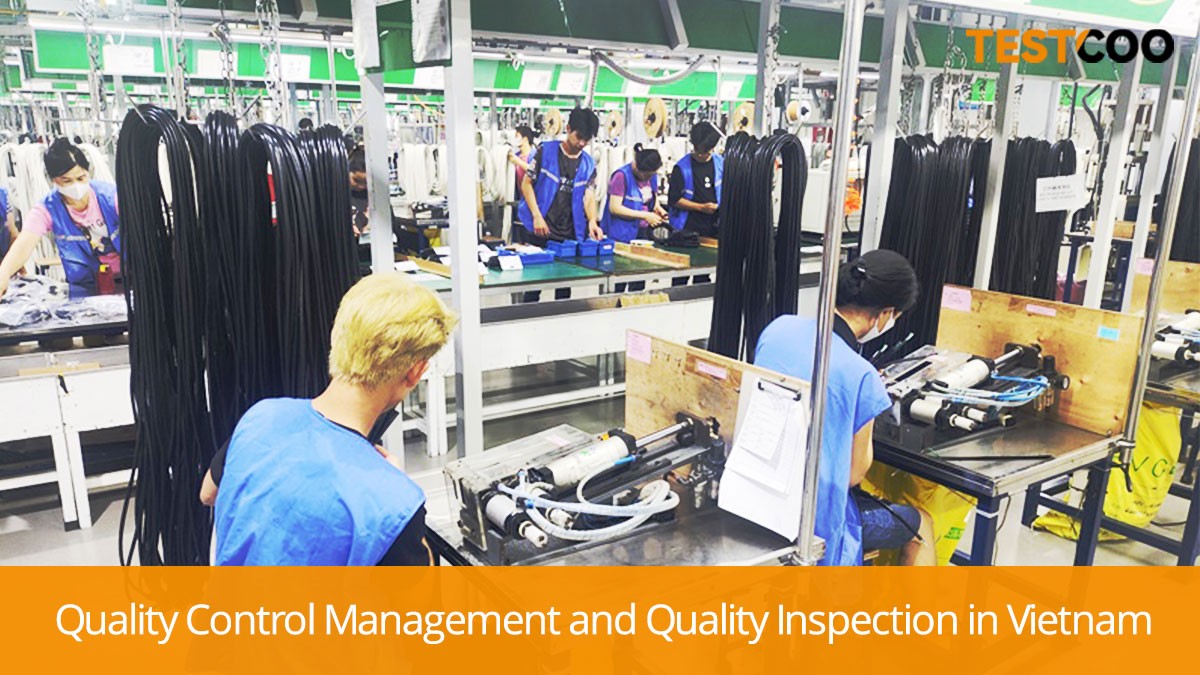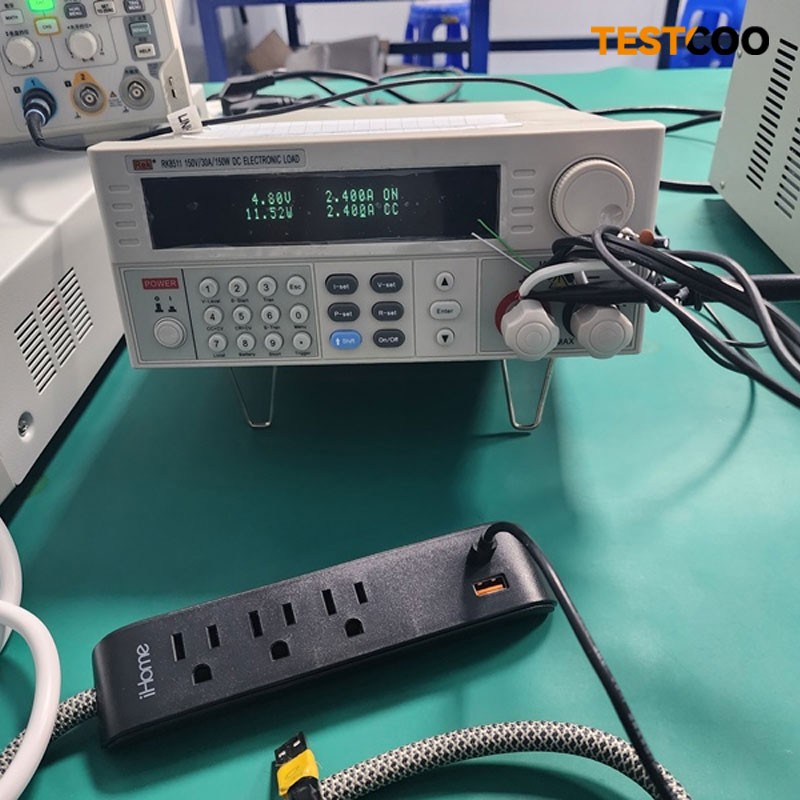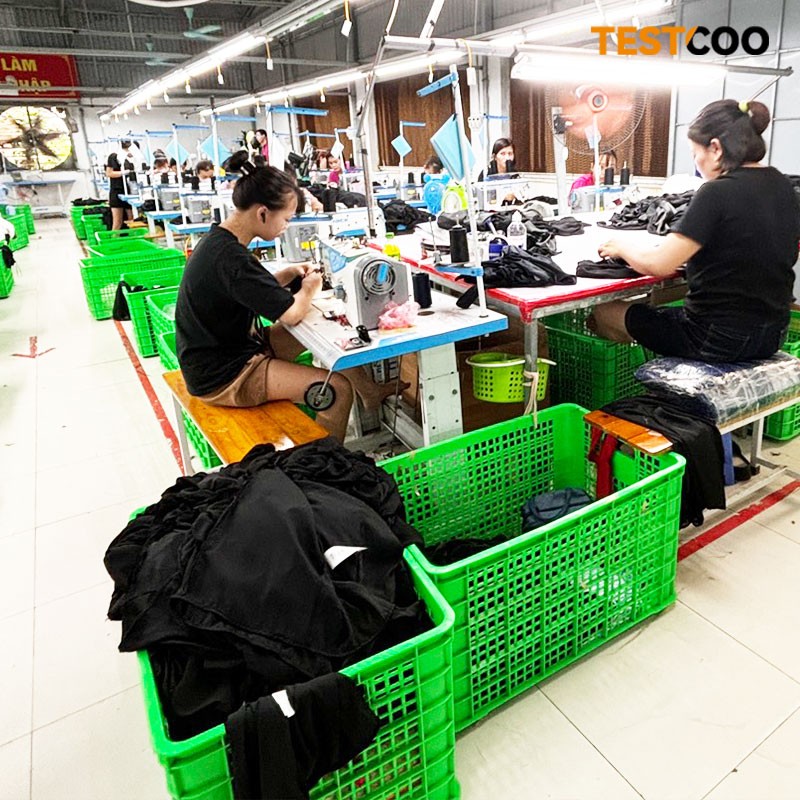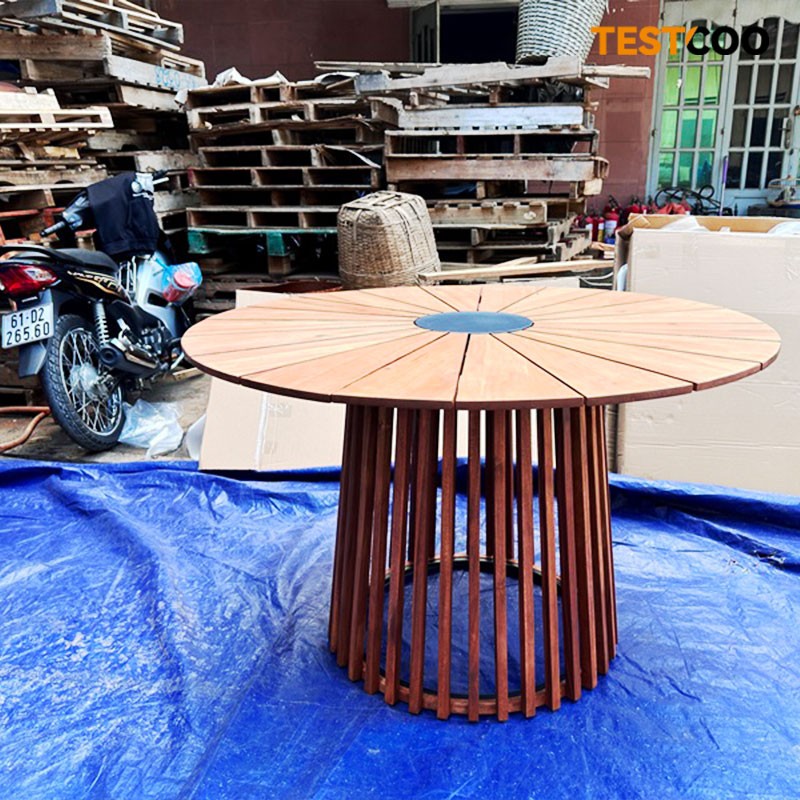What Makes Vietnam one of Asia's Hottest Manufacturing Hubs?

Vietnam has been among the global manufacturing hubs on the rise in Southeast Asia, where low costs of doing business, progressive taxation policies, and geographical location and accessibility are helping local businesses grow cross-border trade.
Vietnam’s manufacturing sector is diverse and main export goods including electronics, textiles products, machinery, footwear products, transportation products, wooden products, seafood products, steel, crude oil, pepper, rice and coffee. The country has emerged as a major manufacturing hub, especially in the electronics and textiles sectors, drawing substantial foreign investment.
This blog help you to discover what makes Vietnam one of Asia’s hottest manufacturing hubs, and how to ensure the quality control management for your business in Vietnam.
Why is Vietnam one of Asia's Hottest Manufacturing Hubs?
Vietnam has become one of Asia's hottest manufacturing hubs offer major, emerging opportunities for trade. Here is the key factors:
- Competitive Labor Costs
Vietnam’s monthly minimum wages in 2024 vary by region – from US$135 to US$194 – with the highest being in cities like Hanoi and Ho Chi Minh City. This cost advantage makes it an attractive destination for companies looking to manage production expenses. The country's young and abundant workforce adds to its appeal for manufacturers seeking cost-effective production solutions.
- Strategic Location
One of Vietnam’s advantages is its location. This strategic location facilitates easy access to important markets in Asia, Europe, and North America, making logistics and supply chain management more efficient.
- Free Trade Agreements
As an export-oriented economy, Vietnam has over 90 bilateral trade agreements and nearly 60 bilateral investment promotion and protection agreements. These agreements reduce tariffs and improve market access, making Vietnam a more attractive destination for foreign investment. Vietnam's accession to ASEAN and the WTO allowed the country to strengthen its integration into the world economy and accelerate the pace of improving investment legislation.
- Political Stability and Economic Reforms
Vietnam's stable political environment and pro-business government policies have created a conducive atmosphere for investment. Economic reforms under the ??i M?i (Renovation) policy since the late 1980s have transitioned Vietnam to a more market-oriented economy, further attracting foreign direct investment (FDI).
- Diverse Manufacturing Base
Vietnam has developed a diversified manufacturing sector, producing everything from electronics and textiles to footwear and furniture. This diversity reduces dependency on any single industry and attracts a wide range of manufacturers.
- Government Incentives
The government of Vietnam has put in place various initiatives to lure foreign investors into manufacturing. These measures include tax exemptions, the allotment of land, and the provision of credit.
- Supply Chain Diversification
Global companies are increasingly looking to diversify their supply chains to reduce risks associated with over-reliance on a single country. Vietnam's growth as a manufacturing hub is partly driven by this shift, as companies seek alternative production bases.
What are the Main Industries Manufacturing in Vietnam?
Vietnam's manufacturing sector is diverse and robust, contributing significantly to its economic growth. The major industrial products are electronic products, computers, mobile phones, machinery and equipment, automobiles, motorcycles, apparel and textiles, petroleum and natural products, rubber products, plastic products and so on.
Vietnam has grown to become the second-biggest supplier of footwear and apparel to the US after China. It is also one of Asia’s key manufacturing hubs and produces goods for some of the biggest Western brands in tech, garments, and sportswear.
Electronics

TESTCOO is conducting pre-shipment inspection for electric plug board in Vietnam.
This is one of the most prominent industries in Vietnam, which contributes to a significant part of its rapid economic growth and manufacturing achievements. In 2024, the revenue in Vietnam's Consumer Electronics market is projected to reach US$7,931.0m.
Consumer goods account for most of the electronics production in Vietnam. Computers, laptops, and components (CLC) products are currently in the top five product categories that have a total export value of more than 5 billion USD. Besides, Vietnam has become a global hub to produce mobile phones and related components.
Apparel and Textiles

TESTCOO experienced inspectors in Vietnam are conducting a pre-shipment inspection for garment.
Vietnam is a leading exporter of textiles and garments, supplying major international brands, since Vietnam’s textile and garment industry is renowned for its versatility and capacity, catering to various clothing and textile needs. The industry benefits from competitive labor costs and favorable trade agreements, making it a critical part of the country's manufacturing sector.
Vietnam’s textile and garment industry has witnessed a strong development and plays an increasingly important role in the economic growth of the country, making Vietnam the world’s third-largest textile and apparel exporter.
Footwear
Vietnam’s leather and footwear industry is a crucial export sector, with approximately 2000 functioning businesses and around 500,0000 employees, Vietnamese factories can manufacture 120 millions pairs of shoes per month. Multinational footwear companies, including Nike and Adidas. In 2024, the revenue in Vietnam's Footwear market is projected to reach US$2.35bn.
Automotive and Motorcycles
Vietnam’s automobile industry has grown significantly in recent years thanks to the country’s fast-growing middle class. Vietnam is the fourth-largest two-wheeler market in the world and the third-largest in electric two-wheeler sales. The automotive industry in Vietnam is expanding, with both local and international manufacturers setting up production facilities.
Machinery and Equipment
Vietnam manufactures various types of machinery and industrial equipment, catering to both domestic and international markets. This includes agricultural machinery, construction equipment, and industrial machinery.
Furniture and Wood Products

Pre-shipment inspection for table in Vietnam
Vietnam has a versatile sourcing market of wooden products and furniture, being one of the biggest exporters globally. Products include indoor and outdoor furniture, flooring, and wooden crafts. Vietnam has turned out to be a great alternative for furniture wholesaler, suppliers, distributors, and retailers seeking furniture made at a low cost.
Where to Find Vietnam’s Manufacturing Enterprises?
Vietnam’s manufacturing is centralized in four key economic regions, including the?Northern, Central,?Southern, and Mekong Delta regions. These regions attract different manufacturing sectors and are distinctive in terms of labor pools, industrial mix, and infrastructure.
Clothing Factories in Vietnam
Ho Chi Minh City and the surrounding areas of Binh Duong and Dong Nai are considered the epicenter of Vietnam's clothing manufacturing. These regions are known for well-established textile and garment industry, supported by a vast network of suppliers and skilled labor.
Hanoi and the northern provinces, including Hai Phong, Bac Giang, and Hai Phong also play a significant role in the garment industry. The north is particularly known for its textile mills and garment factories that produce for both domestic and international market.
The Central Highlands, including Da Nang Quang Nam and Quang Ngai Provinces, are emerging as a growing hub for clothing production, focusing on technical garments and increasing factories meeting international workplace conditions and sustainability standards.
Mekong Delta, including Long An Province: Close to Ho Chi Minh City, is developing its industrial parks, attracting garment manufacturing operations.
Automotive Industry in Vietnam
Vietnam's automotive industry is mainly concentrated in two major economic zones. One is centered on the capital city of Hanoi, Tra Noe lst Industrial Zone in CanTho City of southern Vietnam, including Taiyuan and Hai Phong, ete., and the others centered on Ho Chi Minh City, including Dong Nai Province, Binh Duong Province. and the Thanh Hoa assembly base, etc.
These two economic zones are located near ports with convenient transportation and play as north-south logistics centers. People there have higher income levels and higher spending power, while the two major industrial clusters have many large-scale state-owned traditional machinery manufacturing companies and better resources for skilled labor and technology, so leading automobile manufacturers have chosen them to set up production or sales bases, forming automobile industrial clusters.
Footwear Enterprises in Vietnam
Footwear enterprises are mainly centered in or around Hanoi and Ho Chi Minh City provinces. There are thousands of shoe suppliers and factories in Vietnam. Vietnam was used exclusively to export shoes to US- and EU-based markets. However, it’s recently started exporting footwear to locations in Asia and Latin America
Read more: 5 Top Footwear Manufacturers in Vietnam
Quality Control Management and Quality Inspection in Vietnam
Low labor costs combined with favorable investment policies have made Vietnam an attractive manufacturing hub. With cities like Ho Chi Minh and Hanoi leading the charge, the nation has become a popular production destination for companies in the electronics, apparel, furniture, and more.
However, with enhanced manufacturing capabilities comes substantial responsibility. It is crucial for businesses to uphold consistent quality control measures when working with Vietnamese suppliers and guarantee that imported and exported products align with international standards.
There are serious of regulations and standards when importing products into different market, for example, if importing garment to the E.U., you must comply with?REACH regulations, importing items into the United States, and you must ensure that each clothing article is labeled correctly.
Quality control in Vietnam can be time-consuming and expensive for you as it requires resources you might not have. That is why consider outsourcing this task to a specialist quality control inspection company like TESTCOO Inspection, which could get the job done more effectively and efficiently.
How could TESTCOO Inspection help you?
Many buyers and importers face the challenge of overlooked quality control and assurance in manufacturing process resulting in returns, damaged products, losses, and defects costing both time and money.
We can be your reliable third party quality control partner in Vietnam conducting audits and inspections on your behalf to save your time and money by quickly identifying and addressing potential issues before they escalate, reducing costly delays and ensuring compliance with industry standards. Our well-trained, local full-time inspectors and auditors are available nationwide. Get in touch with us to book an inspection or audit service in Vietnam.
Product Inspection in Vietnam
- Initial Production Check (IPC) to take control of the product quality from the raw materials, procedures.
- During Production Check (DUPRO) to track and improve the quality during mass production.
- Final Random Inspection (FRI) (also pre-shipment inspection) to detect and solve problems before the shipment.
- 100% Inspection to sort out all the most critical defects.
- Container Loading Check (CLC) is to ensure accurate and safe transportation.
Factory Audits in Vietnam
- Supplier Assessment to verify that your supplier is not a fraud and assess their capabilities and capacity.
- Quality Assessment to verify that your supplier's facilities are operational and suitable for manufacturing your product.
- Social Compliance Audit to ensure your suppliers meet international social compliance standards.
The most common types of audits are Supplier Assessment, Quality Assessment, and Social Compliance Audits. In addition to these, there are several sub-audits, such as the SA8000 and the SMETA audits, which are a form of social compliance audits.?Check?Selecting the right social compliance standard:Amfori: BSCI, SA8000, SEDEX SMETA, RBA, WRAP?to learn more.
Free Sample Report Performance Quality Control
Download a sample report to keep control of your supply chain!
Featured Articles
 AQL Table | How to Read It
AQL Table | How to Read It TOP 10 Common Defects in Garments Quality Inspection
TOP 10 Common Defects in Garments Quality Inspection Product Packaging and Shipment Label requirements for Amazon FBA
Product Packaging and Shipment Label requirements for Amazon FBA What Is ASTM-F2413-18? Protective Footwear Standard
What Is ASTM-F2413-18? Protective Footwear Standard How to Conduct Third-Party Quality Control Inspections for Electric Scooters
How to Conduct Third-Party Quality Control Inspections for Electric Scooters SMETA Audit-What is SMETA Audit?
SMETA Audit-What is SMETA Audit? TESTCOO Supplier Verification/Certification Service SLCP, Higg FEM, GRS, GOTS
TESTCOO Supplier Verification/Certification Service SLCP, Higg FEM, GRS, GOTS Quality Control Inspection Company in China
Quality Control Inspection Company in China What is Quality Inspection? A Complete Guide
What is Quality Inspection? A Complete Guide Guidelines for Product Inspection in India
Guidelines for Product Inspection in India
Category
- Production Inspection Service
- Factory Audit
- Softline Inspection
- Hardline Inspection
- Electrics Inspection
- Certification
- Checklist
- Manufacturers
- Quality Assurance Basics
- Products Recall
- AQL
- Guidence and Standard
- News
- Supplier Management
- Amazon
- Protective Equipment
- e-commerce quality control
- Indian Manufacturing
- Soft Goods Quality Control
- Supply Chain Management
- Supply Chain Resilience
- E-Commerce Quality Control
- ISO 2859
- Supply Chain Optimization
- Garment Industry
- Higg Index




